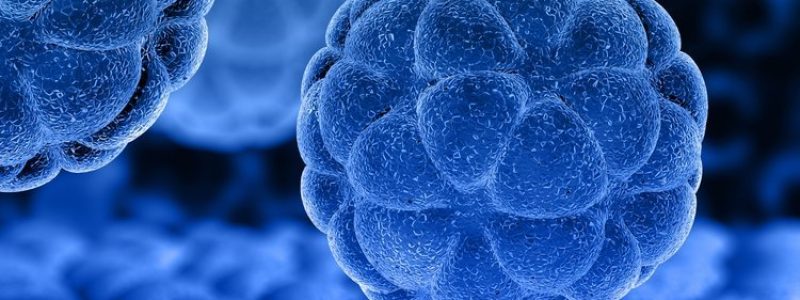Stem Cells
The discovery and then the use of stem cells in medicine goes back only sixty years. These cells, which are defined by an ability to self-renew and differentiate into mature tissue, have been the subject of a great number of scientific works throughout the world.
The discovery of certain types of stem cells in adults has facilitated and democratized research in this area:
- The hematopoietic stem cells found in the bone marrow are used to treat patients with blood cancer (leukemia, lymphoma) and are an example of now proven success.
- Mesenchymal stem cells which are also found in bone marrow but also in fat and which are capable of differentiating into bone and cartilage, which has been the subject of numerous studies in the field of orthopedics.

However, the use of these cells is extremely framed at European level by the EC regulation n ° 1394/2007, published in 2007 which defined a new category of biological drugs largely framing the use of stem cells: the drugs of innovative therapy (ITN). They include somatic cell therapy drugs, drugs derived from tissue engineering, and gene therapy drugs, possibly coupled with medical devices. The stated objective is twofold: both to promote their industrialization and their access to the market while guaranteeing a high level of health protection for patients.
In this regulation, it is the mode of cell preparation that allows classification of a procedure or not as an ITN. Thus, a cellular product whose manufacturing process calls for substantial modifications (such as a culture step) OR whose destination is different between will be the donor and the recipient is an ITN (such as the injection of fat into a joint) .
As ITNs are drugs, they must be prepared in premises of cleanliness equivalent to that used by the pharmaceutical industry. Their widespread use requires, as for any drug, a marketing authorization issued at European level after a certain number of clinical trials validating their effectiveness.
You will find below some examples of MTI procedure still under study but whose results are promising on joint regeneration:
- Culture of mesenchymal stem cells (= capable of differentiation in cartilage) from adipose tissue before intra-articular injection into the knee
- Injection of a fat-PRP mixture at the wrist joint.
It is important to clarify that the use of PRP does not fall under these regulations :
PRP can be injected during the same intervention if it is prepared with a device provided for this purpose.
Bibliographie :
- Pers YM, kwitz L, FerreirRaca R, Pullig O, Delfour C, Barry F, Sensebe L, Casteilla L, Fleury S, Bourin P, Noël D, Canovas F, Cyteval C, Lisignoli G, Schrauth J, Haddad D, Domergue S, Noeth U, Jorgensen C; ADIPOA Consortium. Adipose Mesenchymal Stromal Cell-Based Therapy for Severe Osteoarthritis of the Knee: A Phase I Dose-Escalation Trial. Stem Cells Transl Med. 2016 Jul;5(7):847-56.
- Mayoly A, Iniesta A, Curvale C, Kachouh N, Jaloux C, Eraud J, Vogtensperger M, Veran J, Grimaud F, Jouve E, Casanova D, Sabatier F, Legré R, Magalon J. Development of Autologous Platelet-Rich Plasma Mixed-Microfat as an Advanced Therapy Medicinal Product for Intra-Articular Injection of Radio-Carpal Osteoarthritis: From Validation Data to Preliminary Clinical Results. Int J Mol Sci. 2019 Mar 5;20(5).
- Cuende N, Rasko JEJ, Koh MBC, Dominici M, Ikonomou L. Cell, tissue and gene products with marketing authorization in 2018 worldwide. Cytotherapy. 2018 Nov;20(11):1401-1413.
